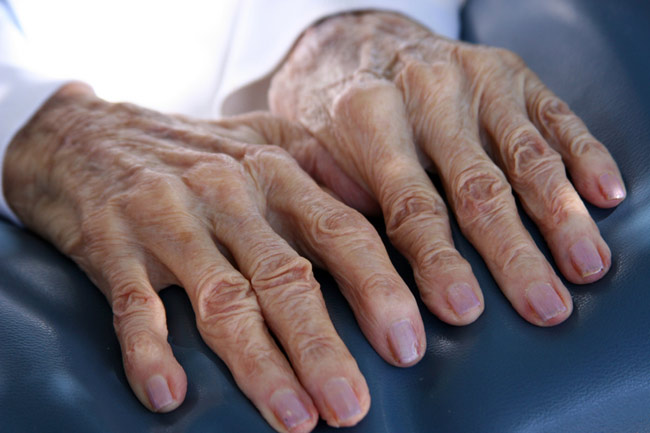What You Don’t Know About the Back of Your Hand

Just as a skinny person might view his or her body as unrealistically fat, many people perceive their hands in a distorted manner, a new study reveals.
The study, which looked at the brain's representation of the hand, shows the brain maintains a model of the hand in which our fingers are perceived to be shorter and our hands fatter than they actually are.
Neuroscientists suspect the reason for these distortions may lie in the way the brain receives information from different regions of the skin.
"The phrase 'I know the town like the back of my hand' suggests that we have near-perfect knowledge of the size and position of our own body parts, but these results show that this is far from being the case," said study researcher Matthew Longo, of the University College London.
"Our results show dramatic distortions of hand shape, which were highly consistent across participants," he said.
Heavy handed
Participants in the study were asked to put their left hands palm-down under a board and judge the location of the covered hand's knuckles and fingertips by pointing to where they perceived each of these landmarks to be. A camera situated above the experiment recorded where the participant pointed. By putting together the locations of all the landmarks, the researchers reconstructed the brain's model of the hand, and revealed its striking distortions.
Sign up for the Live Science daily newsletter now
Get the world’s most fascinating discoveries delivered straight to your inbox.
Participants estimated that their hands were about two-thirds wider and about one-third shorter than actual measurements.
The researchers hope to find out how the brain knows where all parts of the body are in space even when the eyes are closed — an ability known as "position sense." Neuroscientists think position sense requires two distinct kinds of information: While signals the brain receives from muscles and joints play an important role, the brain also needs a model of the shape and size of each body part. For example, to know where the fingertip is in space, the brain needs information on the angles of joints in the arm and hand, as well as the length of the arm, hand and finger.
It is this model of our body's size and shape that was investigated in the study.
"Of course, we know what our hand really looks like" Longo said. "Our participants were very accurate in picking out a photo of their own hand from a set of photos with various distortions of hand shape. So there is clearly a conscious visual image of the body as well. But that visual image seems not to be used for position sense," he said.
Body-image disorders
And something akin to this skewed perception could be at play in those with body-image disorders such as anorexia.
"These findings may well be relevant to psychiatric conditions involving body image such as anorexia nervosa, as there may be a general bias towards perceiving the body to be wider than it is. Our healthy participants had a basically accurate visual image of their own body, but the brain's model of the hand underlying position sense was highly distorted. This distorted perception could come to dominate in some people, leading to distortions of body image as well, such as in eating disorders," Longo said.
The researchers suspect that the brain's distorted model of body shape is due to the way the brain senses different body parts. For example, the subjects’ finger length estimates grew less accurate the farther the digit was from the thumb. This error gradient mirrors decreasing finger sensitivity in human hands for fingers progressively further from the thumb.
The results are published today in the journal Proceedings of the National Academy of Sciences.
- Top 10 Controversial Psychiatric Disorders
- 5 Myths About Women’s Bodies
- 10 Things You Didn’t Know About the Brain










